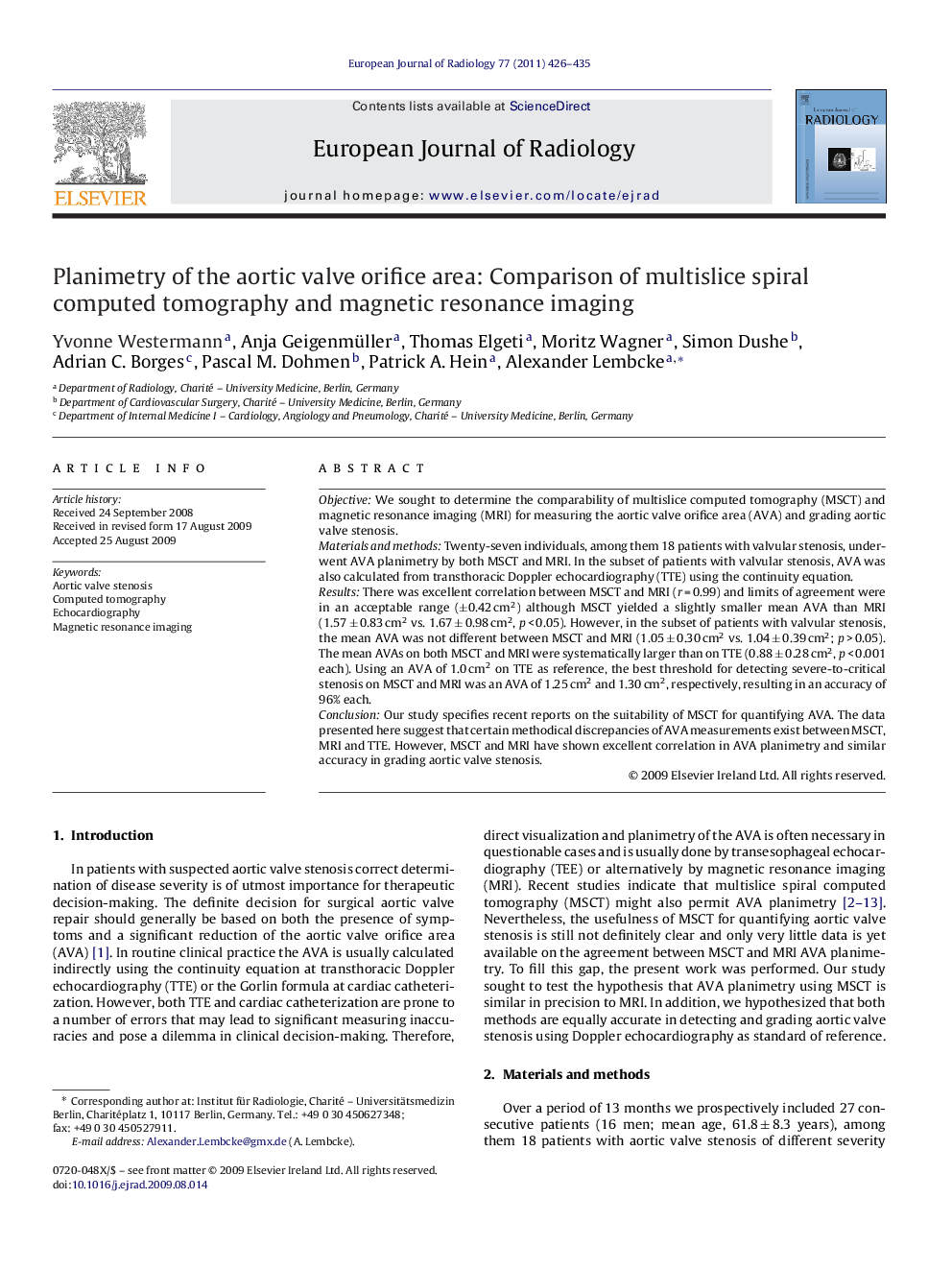| Article ID | Journal | Published Year | Pages | File Type |
|---|---|---|---|---|
| 4226343 | European Journal of Radiology | 2011 | 10 Pages |
ObjectiveWe sought to determine the comparability of multislice computed tomography (MSCT) and magnetic resonance imaging (MRI) for measuring the aortic valve orifice area (AVA) and grading aortic valve stenosis.Materials and methodsTwenty-seven individuals, among them 18 patients with valvular stenosis, underwent AVA planimetry by both MSCT and MRI. In the subset of patients with valvular stenosis, AVA was also calculated from transthoracic Doppler echocardiography (TTE) using the continuity equation.ResultsThere was excellent correlation between MSCT and MRI (r = 0.99) and limits of agreement were in an acceptable range (±0.42 cm2) although MSCT yielded a slightly smaller mean AVA than MRI (1.57 ± 0.83 cm2 vs. 1.67 ± 0.98 cm2, p < 0.05). However, in the subset of patients with valvular stenosis, the mean AVA was not different between MSCT and MRI (1.05 ± 0.30 cm2 vs. 1.04 ± 0.39 cm2; p > 0.05). The mean AVAs on both MSCT and MRI were systematically larger than on TTE (0.88 ± 0.28 cm2, p < 0.001 each). Using an AVA of 1.0 cm2 on TTE as reference, the best threshold for detecting severe-to-critical stenosis on MSCT and MRI was an AVA of 1.25 cm2 and 1.30 cm2, respectively, resulting in an accuracy of 96% each.ConclusionOur study specifies recent reports on the suitability of MSCT for quantifying AVA. The data presented here suggest that certain methodical discrepancies of AVA measurements exist between MSCT, MRI and TTE. However, MSCT and MRI have shown excellent correlation in AVA planimetry and similar accuracy in grading aortic valve stenosis.
